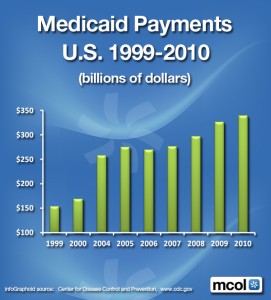Boom! Hospital Revenue Up 5 Percent in Twelve Months
This morning’s Quarterly Services Survey (QSS) released by the Census Bureau reported that hospitals’ revenue rose 4.9 percent from the end of the second quarter in 2013 to the end of the second quarter in 2014. From the first quarter to the second quarter of 2014, it jumped 2.8 percent, overcoming a first quarter drop of minus 0.8 percent. Revenue for ambulatory services rose only 2.4 percent in the same twelve months. It jumped 3.0 percent from the first quarter of 2014, but had dropped 2 percent in the first quarter from the end of 2013.
The QSS surveys a sample of service businesses, and is assuming increasing importance in economic research. It is important because it reveals complementary — and in this case contradictory — data about health spending. As I’ve discussed frequently at this blog, healthcare employment is growing steadily, but not in hospitals. Growth is in the outpatient setting. I had hoped that this indicated that health services were moving out of the high fixed-cost hospital setting and into lower fixed-cost outpatient settings, especially convenient retail clinics.






